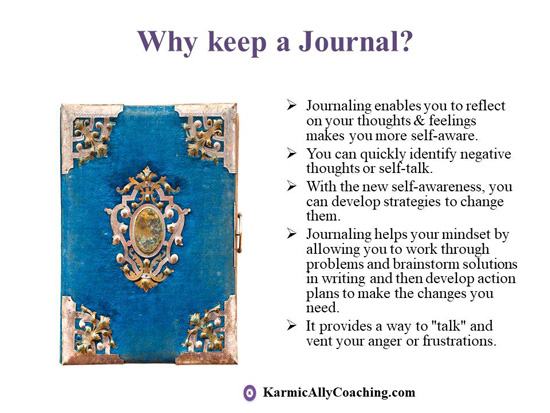
We all want happiness, success, and fulfillment. So, what’s standing in the way? It’s often a matter of mindset.
Your mindset is how you approach the issues and challenges that you encounter.
How you think about these matters affects everything you do, so it’s essential to remain positive.
There’s a reason we often turn to sports to find motivational success stories. It’s one area where we can learn about mindset.
In particular a growth mindset and how it influences our performance.
Embracing a growth mindset can help us rise from the status of underdogs to achieve unbelievable success.
What the Afghan Cricket Team can teach us about mindset
My favorite story is that of Afghanistan’s cricket team.
They’re still a newbie to the world of international cricket, but their performance seems to improve with each international appearance.
They are creating more upsets in the T20 World Cup Championship than any other team.
I’m referring to their win against Bangladesh. 3 days before that, defeating reigning World Cup Champions Australia.
With that win, they entered the semi-finals.
Even though they lost their semi-final match to South Africa, their performance is remarkable and inspiring.
Being the underdog has its advantages – nobody expects you to do well.
That’s what they did back in October 2023 when they created a major upset by defeating reigning World Champions England. They continued to play some really fine cricket to defeat Pakistan at the Group Level.
In that latter match, one saw strategy, discipline and a new mindset of a team that had lost its previous matches to Pakistan. They had a growth mindset both at an individual and team level.
I watch Afghanistan play with keen interest because my dad served as the Deputy Ambassador at the Indian Embassy there back in the mid-1970s.
This was before the invasions by outside powers and the rise of the Taliban. It was a very different country back then.
But the fact remains that the minnows of cricket are proving that they have indeed arrived.
When was the last time you checked in on your mindset?
Is it still growth focused, or have you become rigid caught in the stress and challenges of your job and daily life?
A growth mindset is an actual, demonstrable psychological phenomenon.
Growth mindset is a perspective that sees human beings as capable of change and growth.
It turns out that many long-term successful individuals possess certain characteristics that they share with other long-term successful individuals.
This set of characteristics has been termed a “growth mindset”.
It differs from a fixed mindset, which says people can’t fundamentally change.
Now, some people, who tend to achieve less than their full potential, also possess a set of characteristics that they share with other under-achievers.
This set of traits has been dubbed the “fixed mindset”. Most people, more or less, fall in one camp or the other.
The good news is that a growth mindset can be cultivated fairly easily by changing some critical behaviors.
There are many ways to do this, but the most impactful is to reorder the way you see challenges and learning.
For example, people with a growth mindset see every experience as a chance for growth.
This is particularly the case with challenges, failures, and hard times.
Understand that whether you succeed or fail, you’ll come through your trials knowing more than before.
You need to first decide to choose growth over stagnation. With the right mindset, you can rise to any challenge.
Here are 5 ways to get you started on shifting your mindset for success.
Create a Positive Morning Routine
The way you spend the morning sets the tone for the whole day. Create a morning routine that makes you feel positive and energized. That way, you’ll approach everything you do with more positivity.
Start by deciding what you’ll do when you first wake up. Next, choose activities that will help you feel positive, such as light exercise, meditation, a healthy breakfast, reading time, or enjoying content that inspires you.

Change the Wording or Reframe your Words
One way to adopt a better mindset is to reframe the wording of what you think and believe.
We all have negative beliefs that hold us back. Sometimes, they manifest themselves as negative self-talk. For example, you might say, “I’m not good enough,” or “I can’t do this.”
You can adopt a more positive mindset by reframing them:
I’m not good enough. -> I’m getting better each day.
I can’t do this -> I’m learning how to do this.
Even something like, “I hate my job,” can be reframed to, “I’m doing what I need to do now and transitioning to something better.”
The first step to reframing is to identify your negative thought patterns.
Then, pay attention to the voice inside your head and what it tells you.
Other ways to discover your negative thoughts are to journal, practice mindfulness, or seek feedback from people who know you well.

Challenge Your Limiting Beliefs
You can create an even more lasting effect by challenging your negative thought patterns and demonstrating they’re untrue.
Our mind tends to filter what we see and experience and shows us what we want at any particular time.
We tend to see more evidence of what we believe to be true.
So, why not collect evidence that proves otherwise?
For example, if you feel you’re an imposter and not good at what you do, find contrary evidence.
When these negative thoughts appear, you can counteract them with this evidence. Look at results you’ve gotten before or seek positive feedback from others.
Another way to boost your efforts at shifting your mindset is to consume more empowering content.
Read books about the lives of successful people. You’ll discover they all faced challenges on their road to success.
Find videos, podcasts, and blogs that make you feel inspired. Use content that fires you up and gets you ready to take action.
Podcasts are a great way to feel more empowered because you can listen to them while you work, commute, or do things around the house. It’s like a voice in your ear inspiring you as you go about your day.
Not sure you have limiting beliefs? Try the muscle testing exercise in this post.
Visualize the Future You Want
Setting goals helps you shift your mindset by focusing on positive future outcomes. When you make goals, you create this future for yourself, choosing what you want and don’t want.
Along with setting goals, visualization helps you focus on the future you want, which brings positivity into your life today.
Choose a time in the future and imagine your life and business in as much detail as possible. Use all your senses to visualize what it would be like.
Try this method for maximum benefit.
You can practice this visualization daily or whenever you need some positivity. This is a great element to add to your morning routine.
Creating Positive Success Habits
Creating positive success habits is the best way to shift to a positive mindset. Choose a few from the above or others you may find and create a routine where these strategies become ingrained in your everyday life.
With increased positivity, you’ll find it easier to get things done and keep negativity and stress at bay.
One Final Step for Action Takers
All the tips and ways in the world to shift your mindset will not work until you embrace this one step.
You also have to be willing to take positive action, begin to accept challenges and criticism while learning from both.
An excellent way to begin is by developing the philosophy of “yet”.
Attach the word “yet” to the end of every negative thought, as in “That will never work, yet…” or “It’s probably not worth going, yet…”
This simple trick opens up the possibility for growth and that possibility leads to changed behavior that actually does cause the development of the growth mindset.
And if you’re serious about developing a growth mindset, then you want to check out the Growth Mindset Bundle which comprises a simple guide and planner to keep you accountable to yourself.
The Growth Mindset Bundle will help you develop your mindset for future growth and achieve your potential.
Leave the competition behind and download this resource here.
Want to learn more about how you can transform your mindset into one of positivity? Head over here.




 I adhere to the Certified Coaches Alliance Code of Ethics and Standards. A copy is available on request.
I adhere to the Certified Coaches Alliance Code of Ethics and Standards. A copy is available on request.
 Let's Talk through the Connect Form:
Let's Talk through the Connect Form: